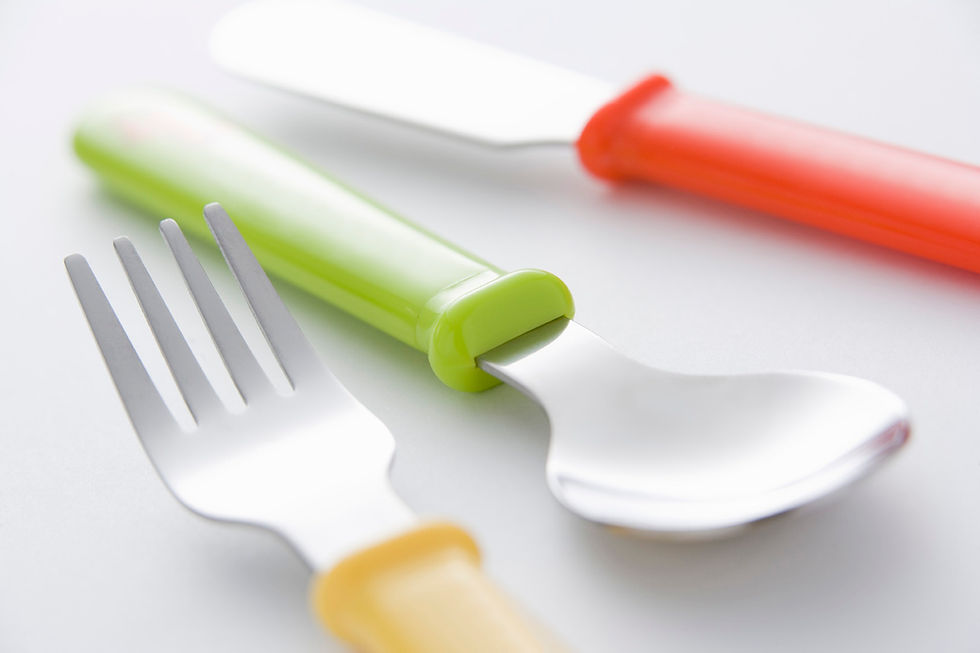Sensory Food aversions
- The Sensory Child
- Feb 24, 2016
- 3 min read

Children with food aversions may benefit from a technique called “Safe Foods”, which has the goal of preventing children from sensory overload. The goal is to start with a food that the child accepts, their “Safe Food”, while offering another plate of food at the same time.
Considerations:
• A child struggles to just prepare for the task of eating. They can be affected by all their surroundings. For example, when your child sits down their body is assaulted by sensory inputs from all sides, such as lights, number of people sitting at the table, noise, feeling of the chair beneath them, clothing, aromas of foods, the taste when they first put food in their mouth and the changes that occur when they crush the food with their teeth.
• Some children prefer foods whose texture does not change when they chew. For example, your child may not be able to predict the texture of a food before they bite into it so they may freeze with the food on the tongue. Your child might respond by spitting the food out of their mouth.
• If your child continues to be pushed to eat foods they cannot tolerate, eating will become something that they fear and avoid.
• Children seek food they feel safe with and do not always eat or drink for reasons of hunger.
• Children may find comfort and emotional well being in seeking out predictable foods that are familiar to them. It is their way of protecting themselves from being overwhelmed by the sensory properties of “new” foods. Mealtimes may be overwhelming to them.
What is the “Safe Food” technique?
Serve a bowl of their favourite food, their “safe food”, next to a bowl of food that the rest of the family are eating. For example my son’s favourite is Weetabix.
It may take a few meals, or longer before they start to take interest in the other plate of food. Consistence is key.
Once they start to try the new foods, gradually reduce the amount of “safe food” in their bowl.
Important Things to Know:
New foods are offered to problem eaters based on a “sensory hierarchy.” Your child must first be able to tolerate being in the same room with the food, the sight of the food, aroma of the food, the feel of the food on their hands and finally the taste by licking and then biting/chewing the food.
Never overwhelm your child by changing all or too many foods at once.
Recognize that some foods are more challenging i.e. meats or vegetables.
More Tips:
Give your child warning as to timing of meals or snacks by using routines to help them feel involved. Our routine board sets are great for this!
Time meals and snacks wisely.
Make the mealtime setting fun and keep it simple.
Keep distractions and noise to a minimum.
Make sure your child is comfortable at meals. Positioning is important.
Motivate your child to succeed and reward small progresses.
Shift focus off your child at mealtimes as much as possible.
Don’t reward negative behavior.
Terms and Conditions
All content provided on this blog is for information purposes only. The Sensory Child makes no representations as to the accuracy or completeness of any information on this site or found by following any link on this site.
The Sensory Child will not be liable for any errors or omissions in this information nor for the availability of this information. The Sensory Child will not be liable for any losses, injuries, or damages from the display or use of this information. These terms and conditions of use are subject to change at anytime and without notice.




























Comments